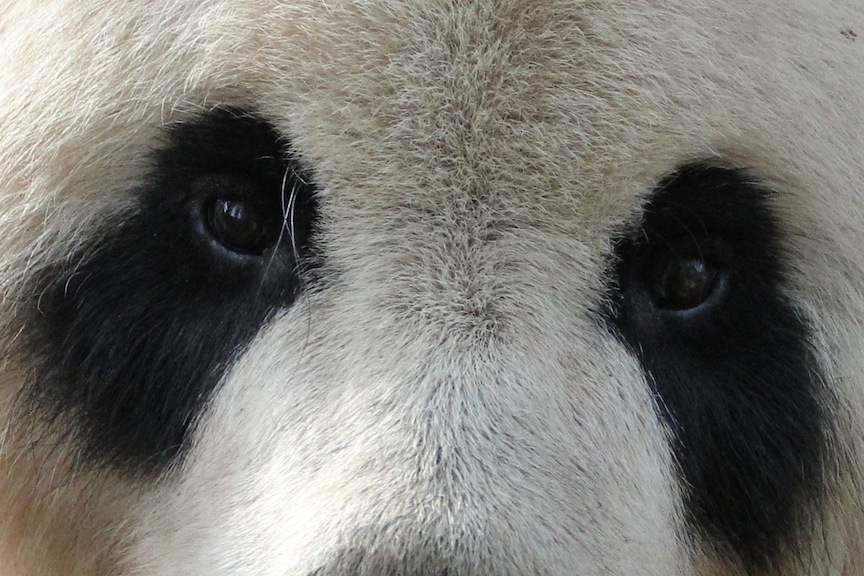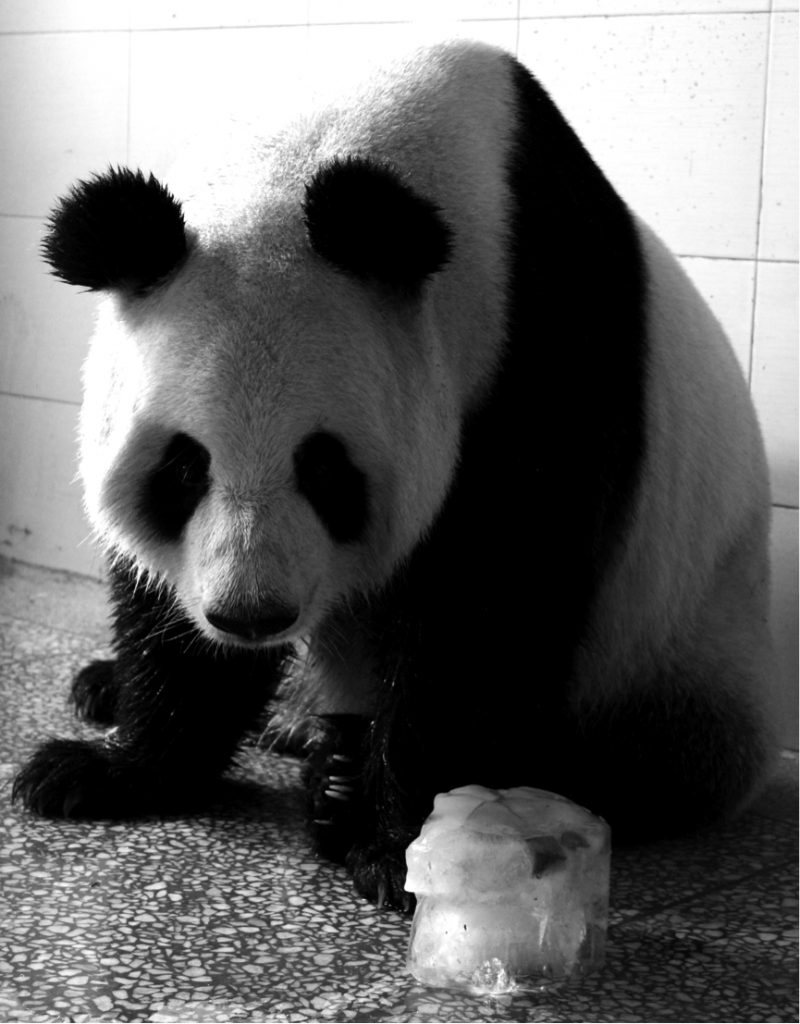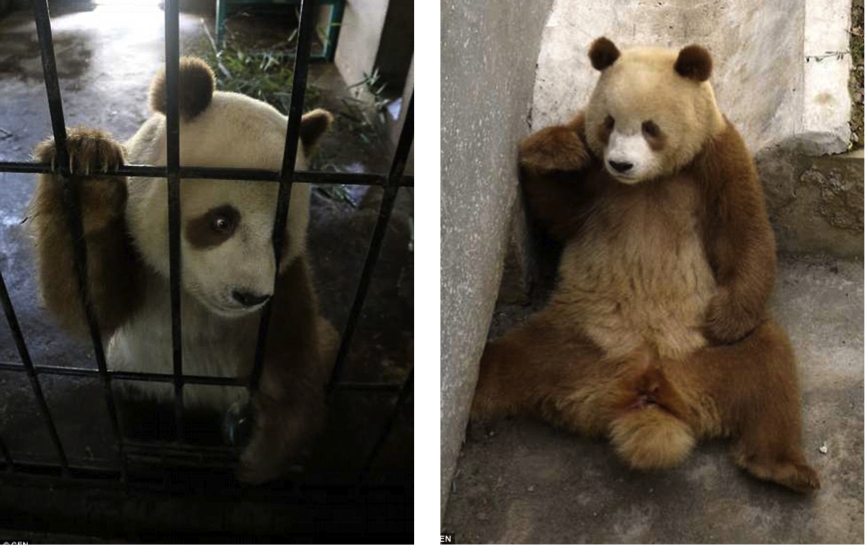Fact #4: Black and white…not exactly the most camouflaged, or is it?
A question that is yet to be answered; why is the panda black and white? What advantage does this bring to them? If they have evolved other vital adaptations for survival why is their fur still an unmistakable pattern?
There are many speculated answers for these questions. The first is camouflage, not the answer I expected but there is some reasoning behind it. The dark and light colours (the black and white) help the panda hide in the shadows of a bamboo forest. It can also become handy when snow starts to fall in the mountains, the black and white can easily be mistaken for snow and rocks.
The second is temperature control, and to be honest was the first thing I thought might be the answer. Many animals, even snails, use black and white patterns to develop a temperature gradient. Black being able to attract or hold heat while the white is able to help dissipate heat, the gradient allows the flow of heat out of the body. As giant pandas don’t hibernate like other bears they need to control their body temperature through the Chinese summer, which is extremely hot and humid, as well as the winter, which can reach minus temperatures.
Thirdly, which actually contradicts the first, the obvious pattern allows other conspecifics to avoid a surprise encounter, or to find each other during the mating season. Giant pandas’ aren’t known for their great eyesight; so bold patterns might help them recognize each other in times of importance.
The fourth reason is aggression. Some biologists believe that the large black eyespots make their eyes look bigger and therefore more aggressive. Giant pandas aren’t an aggressive species, their territorial “fights” are mainly stares. They do this by lowering their head and ‘staring the other panda down’ so to say. Their black ears against their white neck, when they lower their head, are meant to look like another panda behind them.
However, sometimes it’s not always so black and white. Meet Qizai, an especially rare panda with a full coat of tan and brown. Qizai is said to be part of a sub-species only found in the Qinlig mountains of western China. Genetic mutations and the remote local diet are thought to be the cause of the colour change. The keepers of Qizai at Shaanxi Wild Animal Research Centre say that others like him only have patches of brown in their fur, making Qizai especially rare [1].
– Grace
[1] McDermott, K. (2013) It’s not always black and white! The rare brown panda found only in remote mountain of western China. In ‘Mail Online. Vol. 2013.’ (Ed. TD MAIL): http://www.dailymail.co.uk/news/article-2398703/Its-black-white-The-rare-BROWN-panda-remote-mountains-western-China.html)



